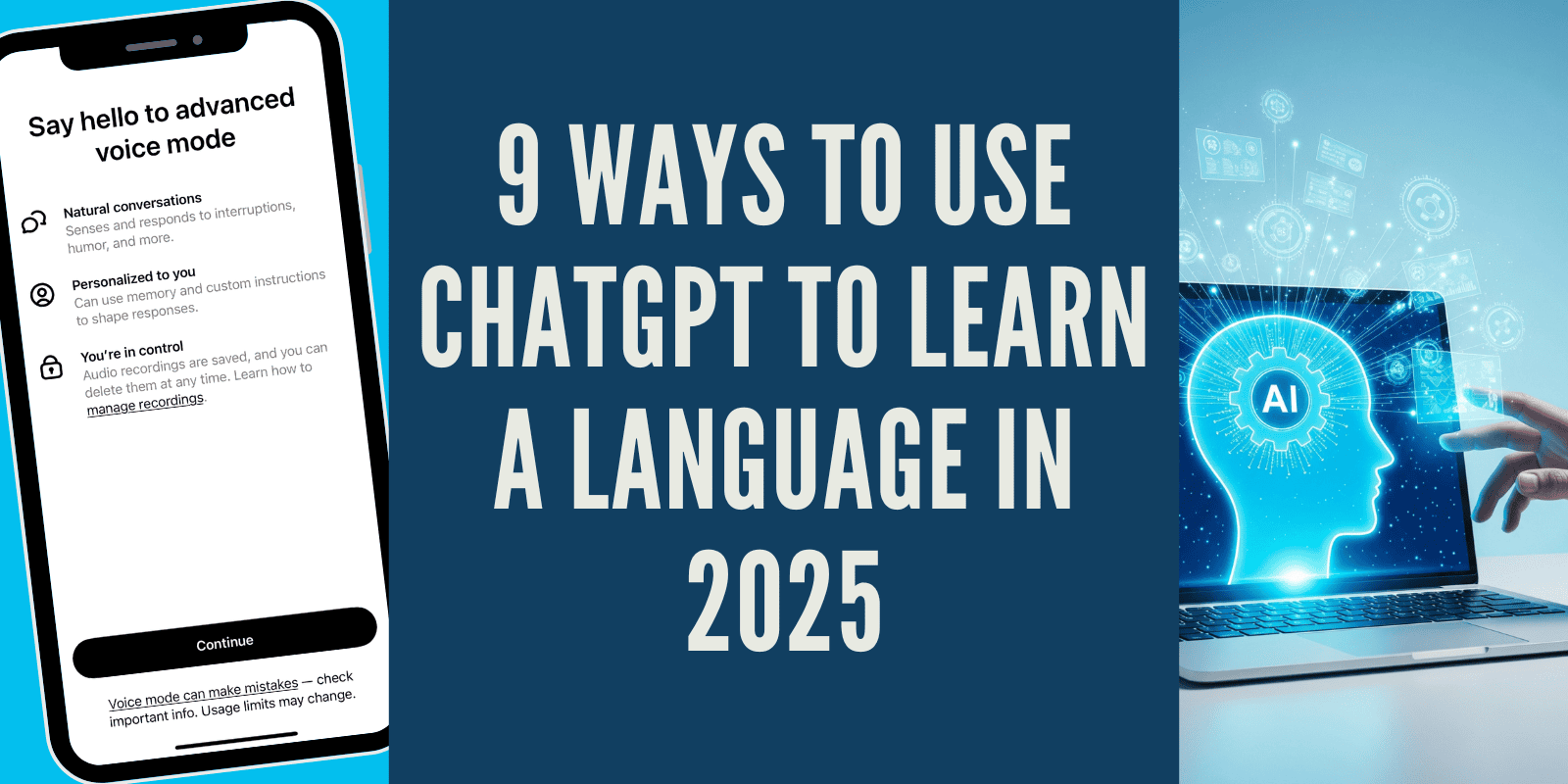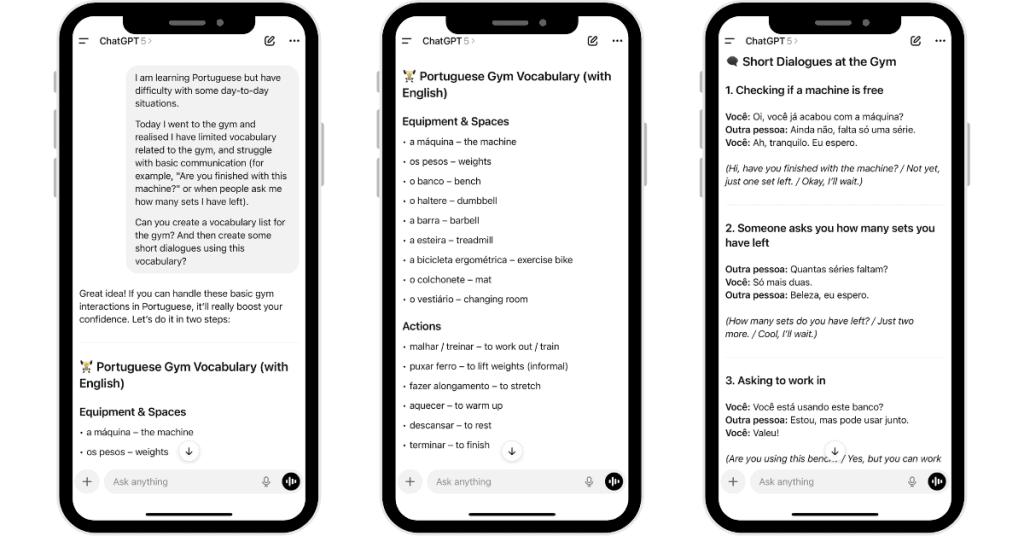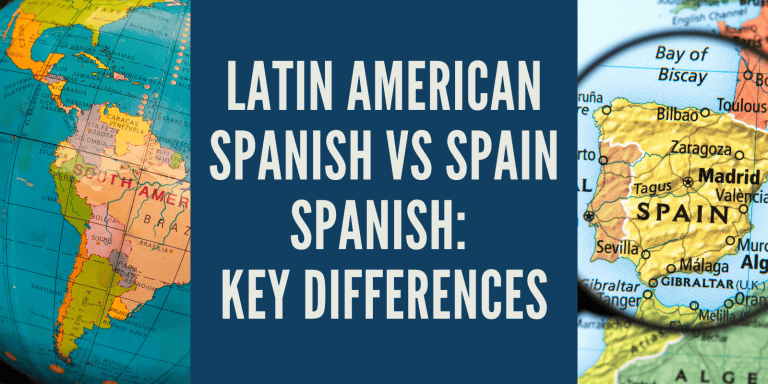9 Ways to Use ChatGPT to Learn a Language in 2025

Did you know you can use ChatGPT to learn a language faster than ever in 2025?
Millions of language learners now rely on artificial intelligence for support, and the number continues to grow. A recent survey revealed that 92% of students in the UK use an AI model in their study routine.
ChatGPT gives you instant answers, detailed explanations, and practice across every skill. Whether you want to improve speaking, check grammar, or build vocabulary, it’s available 24 hours a day.
In this guide, you’ll discover nine practical ways to use ChatGPT and move closer to fluency in your new language.
Why Use ChatGPT to Learn a Language in 2025
Language learners are turning to ChatGPT because it offers what courses and apps cannot: flexibility. You get instant answers on any topic, and artificial intelligence adapts to your level and your goals.
I’ve had extended conversations with ChatGPT, asking language learning questions and receiving clear, useful responses. One of my students, who is learning English, uses it as a speaking partner. After the conversation, she analyses the dialogue and asks for corrections.
Language learning apps, such as Mondly, also use AI to integrate this communication feature into their courses.
AI will never replace human beings in language learning, but it can act like a personal assistant. You can study multiple languages at your own pace, tailored to your goals.
1. Practice Conversations Anytime
One of the most effective ways to improve fluency is to practice speaking regularly.

With ChatGPT, you can create conversations that feel like real life. You decide the topic and setting, giving you a safe space before you talk to native speakers.
On the mobile app, you can also use Voice Mode. This lets you talk to ChatGPT out loud and hear spoken replies in real time. It feels like having a conversation partner who is always available.
You can roleplay daily situations. Order food in German. Book a hotel in French. Ask for directions in Japanese. The more you practice these scenarios, the more natural your speaking will become.
ChatGPT will highlight errors and suggest better wording, so you don’t repeat the same mistake.
I use this every day when I have a spare five minutes. I choose a topic to talk about and let AI respond as if it were a person. Over time, I notice it builds fluency and confidence. And drills the vocabulary relevant to my day-to-day activities.
2. Improve Listening and Comprehension Skills
Most people find listening one of the toughest parts of language learning.
People speak fast and it’s easy to miss words. But I find ChatGPT can help but turning authentic audio into practice exercises that improve your comprehension skills.

Try this:
- Find a short clip in your target language. I use a podcast, film scene, or everyday dialogue.
- Upload the file to ChatGPT or paste the transcript into the chat.
- Ask ChatGPT to create related questions, such as “What did the speaker order?” or “Where were they going?” Answering shows how much you understood and where you need to focus.
This method works best when you listen first, then check difficult words with ChatGPT. You can also ask it to highlight expressions you missed and suggest simpler alternatives.
A good routine is to listen once for the main idea, answer five questions, then listen again for detail. In ten minutes, you strengthen both comprehension and confidence.
Using ChatGPT as a tool in this way turns listening practice into a daily habit, helping you progress steadily toward fluency in your new language.
3. Expand Your Vocabulary and Grammar Knowledge
Vocabulary and grammar are the basis of language learning. ChatGPT can help you grow by generating word lists on any topic, such as travel, food, or business. Each list can include short sample lines that show how the words are used.

For grammar, you can ask ChatGPT to break down a rule in plain language. Instead of reading long textbook notes, you get simple guidance that is easier to follow. If you don’t understand the first time, ask for clarification. It’s like having a personalised tutor.
Another effective step is to write a few lines in your target language and ask for feedback. ChatGPT will highlight errors and suggest more natural wording, so you avoid repeating the same mistake.
To build progress, set a daily target. Learn ten new words, then use them in three short lines and check them with the AI. After a week, you will have added dozens of terms and reinforced key grammar points.
This steady routine keeps your vocabulary growing and gives you a stronger grasp of how the language works.
You’ll notice this routine is similar to structured language courses, such as Rocket Spanish, which include vocabulary lists, grammar explanations, and practice tasks in each lesson. The difference is that AI lets you freestyle.
4. Practice Writing in Your Target Language
Writing is often overlooked in language learning, but it quickly shows where your knowledge is weak.
ChatGPT gives you a safe space to write and receive feedback. You can produce short notes, longer articles, or even a short story and get instant suggestions.
The focus should be on accuracy and natural style. If you make errors, ChatGPT highlights them and shows better wording. You can also ask for expressions that are not often covered in textbooks but make your writing sound authentic.
To build a routine, aim to write one short article or story each week, about 150–200 words. Ask ChatGPT to review it and mark areas that need improvement. With time, you will see clear gains in clarity and confidence.
Daily writing can also be simple.
A short note about your day, written in your target language, is enough to reinforce new vocabulary. By turning your thoughts into complete lines and checking them with the AI, you make steady progress in writing more naturally.
5. Boost Speaking Skills with Pronunciation Support
Clear pronunciation is as important as vocabulary and grammar.
ChatGPT can support this in two ways: you can use Voice Mode in the mobile app to talk out loud and hear spoken replies, or you can pair ChatGPT with a separate text-to-speech tool to turn written text into audio.
This works well for tricky sounds in Spanish, French, and other foreign languages. Many learners struggle with letters missing from their native language or stress patterns that change meaning. Repetition helps you train both your ear and your mouth.
Focus on the words you use most often. Make a short list, listen carefully, and repeat each item three times. If you are unsure, ask ChatGPT to guide you step by step, the way a teacher would.
You can also explore dialects. For instance, compare a French phrase from Paris with one from Quebec. These small differences sharpen your listening and speaking skills.
With steady daily effort, this routine improves pronunciation and builds confidence when you speak a foreign language in real conversations.
6. Translate and Compare Meanings in Different Languages
Translation is one of the most common uses of ChatGPT, and it can be effective for language learning when used carefully.
You can check quick translations of words or short lines in different languages without switching apps. This gives you a fast way to confirm meaning before you use the term.
The value grows when you ask ChatGPT to compare how the same line appears in two dialects. For example, Spanish in Madrid may use one word, while Mexican Spanish uses another. Seeing both versions helps you understand how context shapes usage.
You can also look at cultural differences. Greetings, idioms, and casual expressions vary across regions. ChatGPT can highlight these and explain why one choice may sound more natural.
The AI model draws on wide training data, so it can show you options across different contexts.
Using it this way turns translation into a learning step. You move beyond direct answers and build awareness of meaning, dialect, and cultural use in your target language.
7. Use ChatGPT for Cultural and Idiomatic Learning
Idioms are one of the hardest parts of language learning. They rarely match the literal meaning of the words, and many students find them confusing.
ChatGPT can explain these sayings in simple terms, show how they are used, and provide short examples.
You can also compare how expressions differ across regions.
A phrase that sounds fine in one country may come across as unusual or even rude somewhere else. By asking ChatGPT for cultural notes, you can see why certain words carry different weight.
It helps to learn through dialogue. For instance, ask ChatGPT to create a short exchange where two people use a new idiom. Reading the line in a real situation shows you when it feels natural and when it does not.
This makes the learning process more practical and easier to remember.
Culture shapes language as much as grammar. By exploring idioms with ChatGPT, you build awareness of both. With regular use, you will learn when expressions fit and gain the confidence to use them yourself.
8. Personalise Your Language Learning Experience
Everyone studies for different reasons, so a fixed course can feel too broad.
ChatGPT allows you to design a language learning routine that matches your goals. You can ask it to build a daily plan with a mix of reading, writing, listening, and speaking.
Progress comes faster when you target the areas you most want to improve.
If speaking is a priority, generate daily dialogues. If writing is weaker, prepare short notes or articles and request feedback. This flexible approach keeps your study sessions relevant and helpful.
You can also treat ChatGPT as a course builder. Share your level, objectives, and available time, then let the AI suggest a structured plan. Because it draws on wide training data, it can adapt practice to your needs.
Many people find this method motivating. Instead of relying on one textbook, you follow a plan that feels personal and practical.
With ChatGPT as a daily tool, your language learning experience is no longer tied to a single style. You set the focus, control the pace, and choose the path forward.
9. Avoid Common Mistakes When Using AI for Language Learning
ChatGPT can support your progress, but many people fall into the same traps. The biggest issue is using it as the only method and avoiding real practice.
Language learning still requires contact with other people. Without it, fluency is hard to achieve.
Another risk is expecting perfect answers. ChatGPT is useful, but not always accurate. Always confirm new grammar or vocabulary with trusted resources or people who speak the language. Treat the tool as a guide, not the final source of truth.
Some learners also stay behind the screen instead of trying real conversation. To prevent this, combine your ChatGPT sessions with short exchanges in the target language. Even five minutes with another person helps you hear how the language is used in daily life.
The key is balance.
Use ChatGPT to generate material, create examples, and strengthen your foundation, but pair it with live interaction. Together, these methods build accuracy, confidence, and fluency that lasts.
Final Thoughts on ChatGPT and Language Learning
Using ChatGPT to learn a language is one of the most effective ways to speed up your progress in 2025.
You now have nine clear methods that cover speaking, listening, reading, and writing. Each one helps you build the skills needed for fluency in your target language.
Set small daily goals and stick to them. Ask ChatGPT to correct your mistakes, explain grammar, suggest new words, or roleplay dialogues with Voice Mode on the mobile app.
I recommend using it to practice conversations, test comprehension and review idiomatic expressions.
However, remember that an AI model is a tool, and not a substitute for human teaching. You still need practice with native speakers to gain a deep understanding of a foreign language.
Real conversations bring context and culture that no program can fully replace.
FAQ about How to Use ChatGPT to Learn a Language
Can ChatGPT replace a language teacher?
No. ChatGPT is a helpful tool for practice, but you still need real conversations with native speakers for fluency.
How can I practice speaking with ChatGPT?
Use Voice Mode on the mobile app or start roleplays like ordering food or asking directions. ChatGPT gives you context and corrections so you build fluency step by step.
Is ChatGPT useful for learning vocabulary?
Yes. You can ask for word lists, sample sentences, or quick quizzes to expand your vocabulary daily.
Can ChatGPT help with listening skills?
Yes. Generate short dialogues, use text-to-speech, then answer follow-up questions to check comprehension.
What’s the best way to avoid mistakes with ChatGPT?
Don’t rely only on AI. Always confirm grammar and phrases with native speakers or trusted resources.






